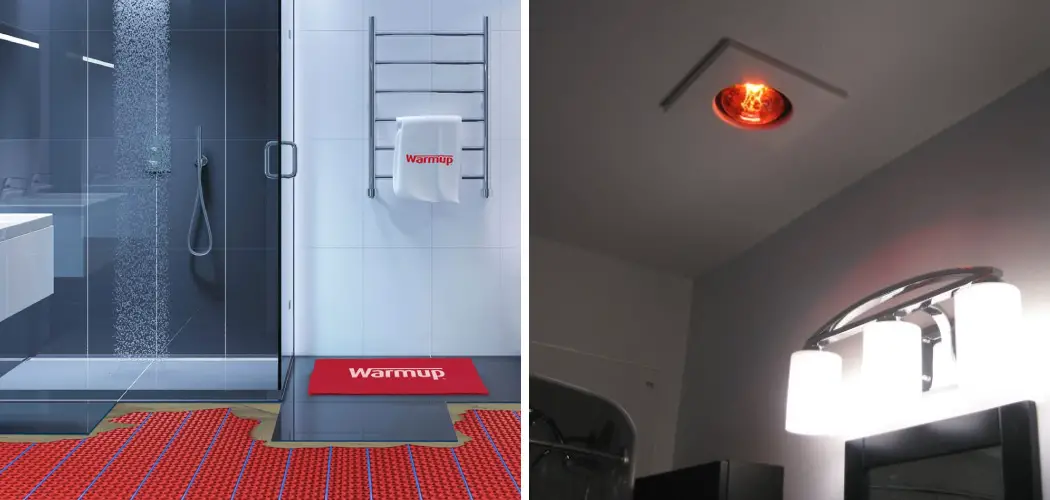Bathroom heating in the winter months can seem like an endless battle. Just when you think your small space is finally starting to feel cozy, the chill creeps back in and sends shivers down your spine as you try to get ready for the day. No one looks forward to stepping out of a steaming hot shower only to be greeted by icy tiles and foggy mirrors. But it doesn’t have to be this way – with some simple adjustments and heating techniques, you can keep your bathroom warm and welcoming all season long.
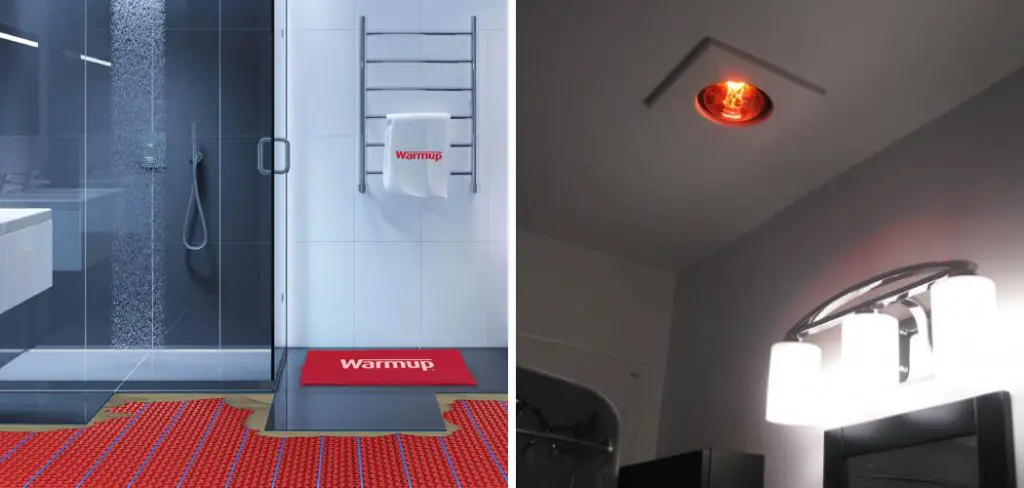
In this post on how to heat a bathroom, I’ll share my top tips for battling bathroom cold based on years of experience heating small spaces on a budget. From ventilation habits and towel tricks to small space heaters and heated towel racks, you’ll learn effective strategies to finally feel toasty from shower to shave.
Why Do Bathrooms Get So Cold?
Before we dive into heating solutions, it’s important to understand why bathrooms tend to get so cold in the first place. There are a few reasons for this:
Limited Insulation:
Bathrooms often have less insulation than other rooms in the house due to their small size and lack of exterior walls.
Frequent Use of Water:
Exposed to moisture from showers, baths, and running water. This can make the room feel colder since water has a lower thermal conductivity than air.
Drafts:
Due to their smaller size and often poor insulation, bathrooms are more prone to draftiness. This is especially true for older homes with single-pane windows and less efficient ventilation systems.
Location:
Many bathrooms are located at the end of a hallway or in a corner of the house, making them more susceptible to cold air seeping in from outside.
Now that you understand why your bathroom may be colder than other rooms in your home, let’s explore some effective ways to heat it up.
Necessary Equipment for Heating a Bathroom
To effectively heat your bathroom, you’ll need to have the right equipment on hand. Here are some key items that can help keep your space warm and cozy:
Space Heater:
A small portable heater is an excellent option for heating up a small bathroom quickly. Be sure to choose one with safety features like automatic shut-off in case it gets too hot or tips over.
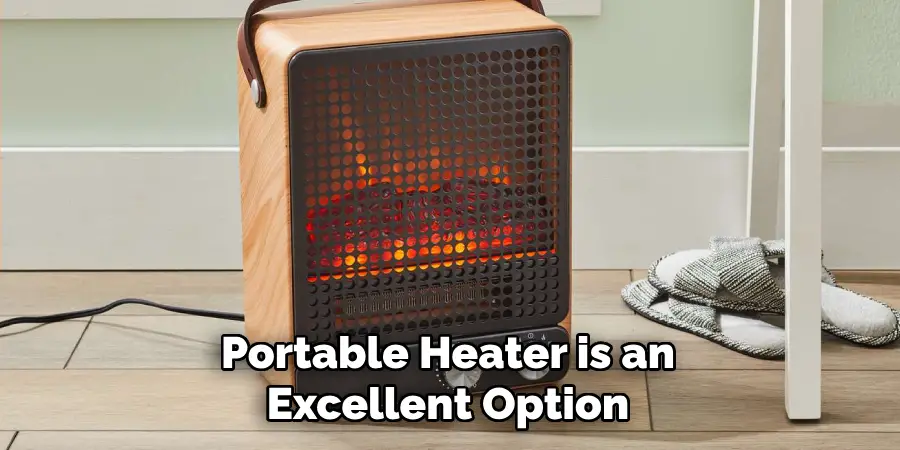
Heated Towel Rack:
Not only do heated towel racks keep your towels warm and fluffy, but they also add a touch of luxury to any bathroom. Plus, they can help heat up the room as well! Just be sure to turn it off when not in use to conserve energy.
Insulated Curtains:
Installing insulated curtains over the windows in your bathroom can help prevent cold drafts from seeping into the room.
Towel Trick:
If you don’t have a heated towel rack, you can still use this simple towel trick to keep your towels warm and make your bathroom feel cozier. Simply place a damp towel on top of a dry one and microwave it for 30 seconds – voila, a warm towel!
Ventilation Habits:
Proper ventilation is important in any bathroom to prevent mold and mildew growth, but keeping the door closed while showering can also help trap heat in the room.

11 Step-by-step Instructions on How to Heat a Bathroom
Step 1: Inspect for Drafts
Walk around your bathroom and check for any drafts or cold air seeping in from outside. If you find any, try to identify the source and take steps to seal it off. It could be an old window, a gap under the door, or even cracks in the walls. Once you’ve addressed these drafts, your bathroom will already feel warmer. But don’t stop there!
Step 2: Upgrade Your Insulation
If your bathroom is not well insulated, consider upgrading it to help trap heat inside. This can include adding insulation to the walls or ceiling and installing double-paned windows. Not only will this help keep your bathroom warm, but it can also save on energy costs in the long run. This is especially important if your bathroom is located in a colder part of the house, like the basement.
Step 3: Use a Space Heater
As mentioned earlier, a space heater is an excellent way to heat up a small bathroom quickly. Just be sure to follow safety precautions and never leave it unattended. It’s also a good idea to use it in conjunction with other heating methods for maximum effectiveness. But keep in mind that space heaters can be expensive to run, so it’s best to use them sparingly.

Step 4: Invest in a Heated Towel Rack
For added warmth and luxury, consider investing in a heated towel rack. Not only will it keep your towels warm, but it can also help heat up the room. Just remember to turn it off when not in use to save energy. The initial cost of a heated towel rack may be higher, but it can save you money in the long run by reducing the need for other heating methods. You can also opt for a towel warmer stand or wall-mounted electric radiator for a similar effect.
Step 5: Use Insulated Curtains
Installing insulated curtains over your bathroom windows can help prevent cold drafts from seeping into the room. Plus, they also add an extra layer of privacy and style to your space. It’s a win-win! The thicker the curtains, the better they will trap heat. But if you’re on a budget, even adding a layer of regular curtains can help improve insulation. It’s all about finding what works best for your space and your budget. It’s also important to make sure your curtains are properly installed and sealed around the edges to prevent any drafts from sneaking in.

Step 6: Try the Towel Trick
If you don’t have a heated towel rack, try the simple towel trick mentioned earlier. This will not only warm up your towels for when you hop out of the shower, but it can also make the bathroom feel cozier. Just be sure to use caution when handling the hot towel and never leave it unattended in the microwave. But if you don’t have a microwave, no worries! You can also place the towels on a radiator or in an oven set to low heat.
Step 7: Close the Door While Showering
Closing the bathroom door while showering can help trap heat inside and make your space feel warmer. This is especially important if you have a vent fan that automatically turns on when you turn on the light. This fan can suck the warm air out of the room, so keeping the door closed will help retain heat. It’s important to note that proper ventilation is still necessary, so be sure to open the door after showering to let the moisture out.
Step 8: Use a Bathroom Fan Timer
If you do have a vent fan in your bathroom, consider installing a timer to control how long it runs for. This way, you can set it to automatically turn off after a certain amount of time, preventing excess heat loss. Plus, it can also help you save on energy costs by not running the fan longer than necessary. Although it may seem like a small detail, every bit counts when trying to keep your bathroom warm.
Step 9: Install a Radiant Floor Heating System
For a more permanent solution and added luxury, consider installing a radiant floor heating system in your bathroom. This involves placing electric heating coils under your flooring to provide consistent warmth from the ground up. This can be a bit more expensive and time-consuming, but it can significantly improve the overall warmth and comfort of your bathroom.
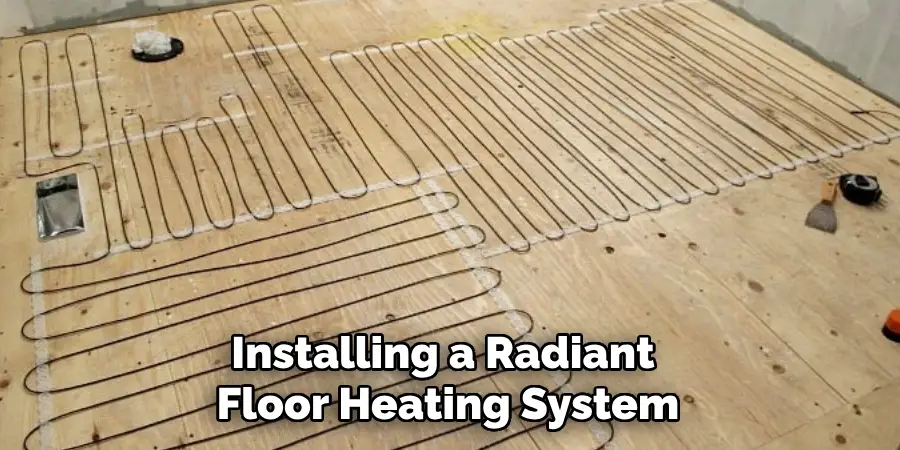
Step 10: Use a High-Efficiency HVAC System
If you’re willing to make a larger investment, upgrading to a high-efficiency HVAC system for your home can also greatly improve the warmth in your bathroom. These systems are designed to be more energy-efficient and can evenly distribute heat throughout your space. Plus, they can also come with added features like programmable thermostats for optimal control and convenience.
Step 11: Don’t Forget About Insulating Your Pipes
Last but not least, don’t forget to insulate your water pipes! This will help keep the hot water hot as it travels from your water heater to your bathroom, reducing the need to constantly adjust the temperature. This is especially important in colder climates where pipes are more likely to freeze. Insulation sleeves or foam tape can easily be purchased and installed on your own.
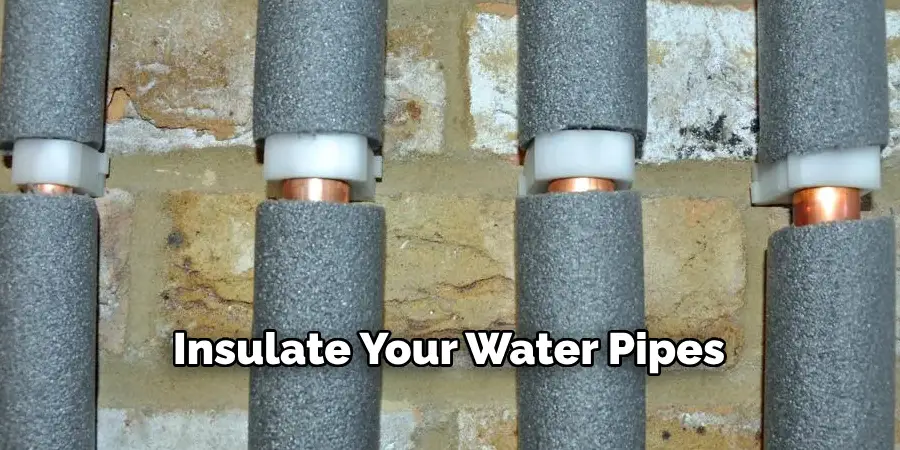
Following these steps on how to heat a bathroom and utilizing a combination of methods can help you effectively heat up your bathroom and make it a cozy refuge, no matter the temperature outside. Remember to always follow safety precautions and consider consulting a professional for any major upgrades or installations. Stay warm and enjoy your heated bathroom!
Frequently Asked Questions
Q: What is the Best Way to Heat Up a Bathroom Quickly?
A: Using a space heater or heated towel rack can help warm up your bathroom quickly, but be sure to use them safely and sparingly. It’s also helpful to use them in combination with other heating methods.
Q: Are There Any Energy-Efficient Ways to Heat a Bathroom?
A: Yes, upgrading your insulation and investing in high-efficiency HVAC systems are both effective ways to heat a bathroom while also saving on energy costs. You can also use insulated curtains and timers for exhaust fans to reduce excess heat loss.
Q: Can I Install a Radiant Floor Heating System on My Own?
A: It is recommended to consult a professional for the installation of a radiant floor heating system, as it can be more complex and time-consuming. However, there are DIY options available for those with experience in home renovation and electrical work. Always follow safety precautions and double-check local building codes before attempting any installations yourself. Overall, using a combination of these methods can help you effectively heat your bathroom and create a cozy space for relaxation.
Q: Are There Any Safety Precautions I Should Take When Using Space Heaters or Heated Towel Racks?
A: Yes, always make sure to read and follow the instructions provided by the manufacturer. Keep flammable materials at least three feet away from space heaters and never leave them unattended or run them while you are sleeping. For heated towel racks, turn them off when not in use to prevent accidents and save energy. So, these are some of the best ways to heat a bathroom quickly and efficiently. Stay warm and enjoy your cozy bath time!
Conclusion
In conclusion on how to heat a bathroom, heating a bathroom may seem like a simple task, but it is essential for creating a comfortable and cozy space. From the various methods discussed, including investing in a heated towel rack or installing radiant floor heating, there are numerous options to suit any budget and preferences. So why suffer through cold mornings and shivers during post-shower routines when you can easily transform your bathroom into your own personal warm oasis? Take into account the different factors, such as budget, size of the bathroom, and desired temperature, to determine which method will work best for you.
Don’t be afraid to get creative and think outside the box – after all, winter is all about staying warm and cozy indoors! So go ahead and make that investment or try out that DIY project you’ve been eyeing – your future self will thank you when you step into your cozy heated bathroom every day. Bye-bye, freezing toes and hello happy mornings! Make sure to share your experience in the comments below and spread the warmth by sharing this post with others who may be in need of some heating solutions. Stay warm!

